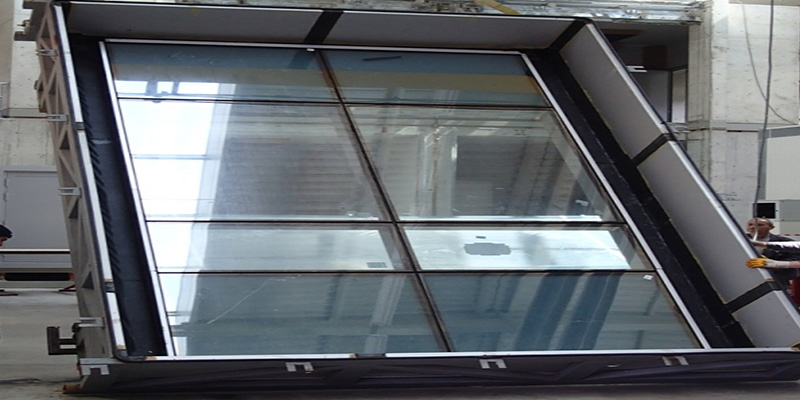Downloads
DOI:
https://doi.org/10.7480/jfde.2015.1.917Keywords:
Unitized curtain wall, full-scale test, structural and infiltration performanceAbstract
Unitized curtain wall systems have been widely seen on high-rise buildings’ facades by bringing benefits with regard to ease of construction, lightness, etc. However, some design and application problems related to structural and infiltration performance of a facade system might arise during its life cycle, which is difficult for the building to compensate. This paper presents a comparative analysis of the structural and infiltration performance of the two identically detailed and produced unitized curtain wall system mock-ups. In order to understand long-term environmental effects on the curtain wall system, a fatigue process was applied on one system in addition to the standard test procedures, while the standard test procedure was applied on the other reference specimen. The tests on the two identical specimens were conducted in accordance with TS EN 13830 and AAMA 501.4 Standards. As a result of air infiltration and wind load resistance tests, air infiltration and frontal deflection values on the facade surface were obtained. Hence, experimental performance of the systems was compared and the effect of the fatigue procedure on the facade performance was evaluated.
How to Cite
Published
Issue
Section
License
Copyright (c) 2015 E. Ilter, A. Tavil, O.C. Celik

This work is licensed under a Creative Commons Attribution 4.0 International License.
Authors or their institutions retain copyright to their publications without restrictions.
References
Horowitz, J. (1991). The Interrelation of Exterior Wall and Structural Systems in Buildings, Exterior Wall Systems-Glass and Concrete Technology, Design and Construction. Edited by Barry Donaldson, ASTM STP.
Wong, W. (2007). Analysis and Design of Curtain Wall Systems for High Rise Buildings. University of Southern Queensland Faculty of Engineering and Surveying, Australia.
Sakhnovsky, A. A. (1991). Full-Scale Performance Testing of Curtain Walls. Exterior Wall Systems-Glass and Concrete Technology, Design and Construction. Edited by Barry Donaldson, ASTM STP 1034.
Kaskel, B. S. et al. (1998). Critical Review of Curtain Wall Mockup Testing for Water Penetration. Water Leakage Through Building Facades. Edited by Kudder, R. J. and Erdly, J. L., ASTM STP 1314.
Galli, U. (2011). Seismic Behavior of Curtain Wall Facades. A Comparison Between Experimental Mock-Up Test and Finite Element Method Analysis. Doctoral Dissertation, Politechnico di Milano.
Ilter, E., Tavil, A., Celik, C. O., Seyhan, M. (2014). Full-Scale Performance Testing of Unitized Facade Systems. ICBEST 2014, Aachen, Germany.
TS EN 12153 (2004). Curtain Walling, Air Permeability / Test Method. Turkish Standards Institution. Ankara, Turkey. (Classification standard: TS EN 12152, Curtain Walling, Air Permeability / Performance Requirements and Classification, Turkish Standards Institution, Ankara, 2004).
AAMA 501.1 (2005). Standard Test Method for Water Penetration of Windows, Curtain Walls and Doors using Dynamic Pressure. American Architectural Manufacturers Association, USA.
TS EN 12179 (2000). Curtain Walling, Resistance to Wind Load / Test Method. Turkish Standards Institution, Ankara, Turkey. (Classification standard: TS EN 13116, Curtain Walling, Resistance to Wind Load / Performance Requirements, Turkish Standards Institution, Ankara, 2004).
AAMA 501.4. (2009). Recommended Static Testing Method for Evaluating Curtain Wall and Storefront Systems Subjected to Seismic and Wind Induced Interstory Drift. American Architectural Manufacturers Association, USA.
ETAG 17 (2006). Standard for Systemized Building Envelopes. Centre for Window and Cladding Technology - CWCT, UK.
TS EN 12155 (2005). Curtain Walling, Watertightness / Laboratory Test Under Static Pressure. Turkish Standards Institution, Ankara, Turkey. (Classification standard: TS EN 12154, Curtain Walling, Water-tightness / Performance Requirements and Classification, Turkish Standards Institution, Ankara, 2004).
